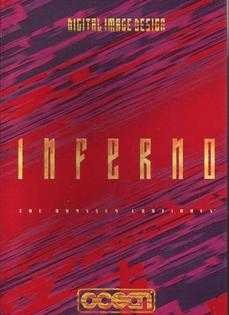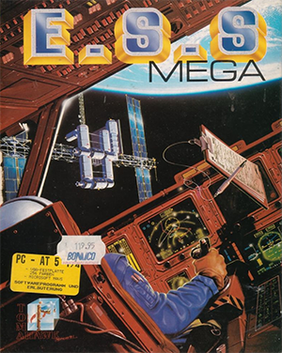
Populous is a video game developed by Bullfrog Productions and published by Electronic Arts, released originally for the Amiga in 1989, and is regarded by many as the first god game. With over four million copies sold, Populous is one of the best-selling PC games of all time.
Legend Entertainment Company was an American developer and publisher of computer games, best known for creating adventure titles throughout the 1990s. The company was founded by Bob Bates and Mike Verdu, both veterans of the interactive fiction studio Infocom that shut down in 1989. Legend's first two games, Spellcasting 101: Sorcerers Get All the Girls and Timequest, had strong sales that sustained the company. Legend also profited from negotiating licenses to popular book series, allowing them to create notable game adaptations such as Companions of Xanth and Gateway. Legend also earned a reputation for comedic adventures, with numerous awards for Eric the Unready in 1993. As the technology of the game industry changed, Legend continued to expand its game engine to take advantage of higher graphical fidelity, mouse support, and the increased media storage of the compact disc.

M1 Tank Platoon is a tactical simulator of tank warfare developed and published by MicroProse for the Amiga, Atari ST and MS-DOS in 1989. The game features a mixture of first-person, third-person tank warfare, and tactical simulation gameplay. It was followed by a sequel, M1 Tank Platoon II, released by MicroProse in 1998 for Windows. M1 Tank Platoon was sold to Interplay Entertainment in 2009. M1 Tank Platoon is available on Steam and Epic Games services.

Rise of the Dragon is a graphic adventure game released in 1990 for DOS and Macintosh, and later remade for the Sega CD (1992) as well as the Amiga. It was one of the few adventure game titles developed by Dynamix, a company that was better known as an action and flight simulator game developer. The game is set in a dark future cyberpunk version of Los Angeles.

LHX Attack Chopper is a combat helicopter simulation game published by Electronic Arts in 1990. Development was led by Brent Iverson who later designed Chuck Yeager's Air Combat. The game was released for MS-DOS and ported to the Mega Drive/Genesis.

Epic is a space combat simulation game developed by Digital Image Design and published by Ocean Software for the Commdore Amiga and Atari ST in early 1992. A port to MS-DOS also appeared in the same year, followed by a version for the NEC PC-9801 in 1993. A sequel, titled Inferno, was released in 1994 for PCs only.

Powermonger is a real-time strategy video game developed by Bullfrog Productions and published by Electronic Arts. Originally released in 1990 for the Amiga and Atari ST, it was derived from the Populous engine but presented using a 3-dimensional game map.
Microsoft Flight Simulator began as a set of articles on computer graphics, written by Bruce Artwick throughout 1976, about flight simulation using 3-D graphics. When the editor of the magazine told Artwick that subscribers were interested in purchasing such a program, Artwick founded Sublogic Corporation to commercialize his ideas. At first the new company sold flight simulators through mail order, but that changed in January 1979 with the release of Flight Simulator (FS) for the Apple II. They soon followed this up with versions for other systems and from there it evolved into a long-running series of computer flight simulators.

TFX is a 1993 combat flight simulator video game developed by Digital Image Design and published by Ocean Software that was released for DOS and Amiga computers.
A space flight simulation is a genre of flight simulator video games that lets players experience space flight to varying degrees of realism. Common mechanics include space exploration, space trade and space combat.

Knights of the Sky is a World War I combat flight simulator designed by Jeff Briggs and published by MicroProse in 1990 for MS-DOS. Ports to the Amiga and Atari ST followed in 1991.

MiG-29 Fulcrum is a combat flight simulator video game released by Domark in 1990 for the Acorn Archimedes, Amiga, Atari ST and MS-DOS PC platforms.

The Ancient Art of War in the Skies is a video game developed by Evryware in 1992 for MS-DOS as a sequel to The Ancient Art of War and The Ancient Art of War at Sea. In 1993 conversions were published for Amiga and Atari ST.

Inferno is a space combat simulator video game developed by Digital Image Design and published by Ocean Software in 1994 for the PC. It is a sequel to the 1992 game Epic.

Falcon is a combat flight simulator video game and the first official entry in the Falcon series of the F-16 jet fighter's simulators by Spectrum HoloByte. Originally developed by Sphere for Macintosh and MS-DOS in 1987 and ported to several platforms between 1988 and 1992, the game earned commercial success and critical acclaim.

The Hunt for Red October is a video game based on the 1984 book The Hunt for Red October by Tom Clancy. It was released in 1987 and was available for the Atari ST, Amiga, Apple II, Macintosh, ZX Spectrum, MSX, Commodore 64, and IBM PC. A port for the Apple IIGS was released in 1989. The game is a combination of submarine simulator and strategy game. The player navigates the Red October towards U.S. waters while avoiding the Soviet Navy.

E.S.S Mega is a space simulation game published by Tomahawk and developed by Coktel Vision. E.S.S. Mega recreates ESA's space vehicle concepts of the early 1990, specially the Hermes Shuttle. The game was released for MS-DOS and Atari ST in 1991, and Commodore CDTV in 1992.

Space Shuttle: A Journey into Space is a space flight simulator game designed by Steve Kitchen for the Atari 2600 and published by Activision in 1983. It is one of the first realistic spacecraft simulations available for home systems. Space Shuttle was adapted to the Atari 8-bit family and Atari 5200 by Bob Henderson (1984), then ported to the ZX Spectrum (1984), Commodore 64 (1984), Amstrad CPC (1986), and MSX (1986). The 1984 Activision Software catalog also mentions an Apple II version.

Nobunaga's Ambition is a 1986 strategy game by Koei, focused in the Sengoku period of the history of Japan. A part of Koei's "Historical Simulation" line of titles, it was published on several platforms such as IBM PC compatibles, Amiga, the Nintendo Entertainment System, Super NES, and Mega-Drive. It is the second game in the Nobunaga's Ambition series and the first Nobunaga's Ambition title to be released in English. The player has the objective unifying Japan as Oda Nobunaga or as any of the other daimyos present in the game. Several revisions were made to the gameplay since the first game, as well as a 50-province mode which expanded the game's map to feature all of Japan.

Chronicles of Osgorth: The Shattered Alliance is a 1981 computer wargame published by Strategic Simulations in January 1982 for the Apple II and Atari 8-bit family. Programmed by John Lyon, it relies on a new game engine, called RapidFire, intended to make faster and easier access to wargames published by the studio. During a turn, the program selects the units each in turn and the player only has to order them to move, attack or cast a spell. The order is then executed immediately before the program selects another unit. The game offers two categories of scenarios. The first is composed of medieval-fantasy confrontation, including a free adaptation of the Battle of Gondor against the Mordor forces in the Lord of the Rings. The second is composed of historical battles of antiquity.

















